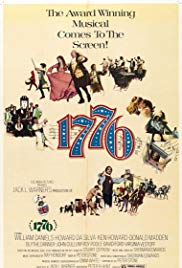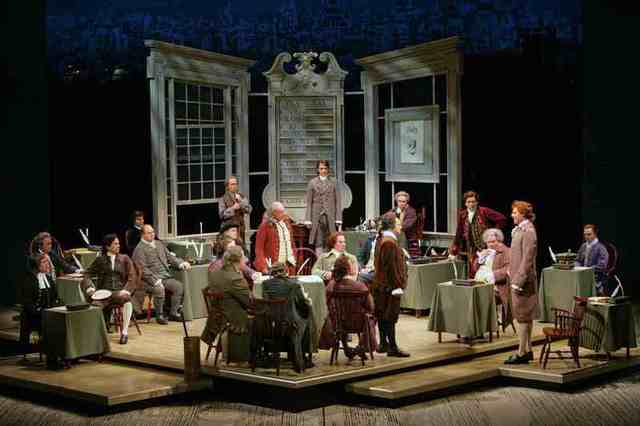The Declaration of Independence is one of the most important documents of Western Civilization. Its statement of natural law, contained in the second paragraph, sets out the fundamentals of democratic political belief:
We hold these truths to be self-evident, that all men are created equal, that they are endowed by their Creator with certain unalienable Rights, that among these are Life, Liberty and the pursuit of Happiness. That to secure these rights Governments are instituted among Men, deriving their just powers from the consent of the governed….
The Declaration of Independence was adopted in the Second Continental Congress that assembled in Philadelphia on May 10, 1775. The First Continental Congress had called upon the colonies to adopt a Continental Association boycotting trade with Britain and had sent a petition to King George III called the Declaration of Rights and Grievances. Committees of Safety were established to enforce the association and the boycott. These committees became centers for revolution.
In the Second Continental Congress, radicals led by John Adams and Ben Franklin were much stronger than they had been in the First Congress. The Battles of Lexington and Concord had already taken place and militiamen had surrounded the British occupying force in Boston. The Congress commissioned General George Washington to form the Continental Army, sent ambassadors abroad, established rules for trading, issued paper money, and assumed many other functions of a government.
Even so, the radicals could not convince their colleagues to vote for independence until the publication of Thomas Paine’s pamphlet, Common Sense. This created such strong support for independence that the conservative delegates could no longer resist. After independence was declared the Second Continental Congress directed the Revolutionary War, negotiated the peace and later agreed upon the Articles of Confederation. The Second Continental Congress served until it was replaced by the Congress of the Confederation after the Articles had been approved by all of the colonies in 1781. The Articles of Confederation were a failure and were replaced by the United States Constitution in 1789. For a description of the “bargain with the devil” on slavery that was necessary for the Declaration of Independence and later the U.S. Constitution to be adopted, see Learning Guide to “Roots, Volume 1”
Benjamin Franklin (1706 – 1790) was a printer, author, statesman, diplomat, scientist, and philosopher. He championed the cause of independence, founded the first public library, authored Poor Richard’s Almanac, proved that lightning was an electrical phenomenon, invented the lightning rod, championed public education, served in the Continental Congress, negotiated (with John Jay and John Adams) the peace treaty with Britain, and served as an ambassador to France.
John Adams (1735 – 1826) was an early advocate of independence, was the driving force behind the selection of George Washington as commander of the Continental Army, served as ambassador to France, helped to negotiate the peace treaty that ended the Revolutionary War, and was the second President of the United States. President Adams, defeated in his bid for reelection by Thomas Jefferson, presided over the first peaceful change of administration from one political party to another.
Franklin and Adams served together as ambassadors to France. They were later joined by Thomas Jefferson. Adams and his remarkable wife Abigail became great friends of Thomas Jefferson. Jefferson and Abigail Adams kept up a famous correspondence. After independence the Adams/Jefferson friendship was broken by political differences. Jefferson defeated Adams’ attempt at reelection as President in 1800. They reconciled in 1812 after Jefferson had left office. Adams died on July 4, 1826, 50 years to the day after the signing of the Declaration of Independence. Adams’ last words were, “Jefferson still lives.” He was wrong. Jefferson had died a few hours earlier. Adams lapsed into a coma and died before he could explain what he meant.
Thomas Jefferson (1743 – 1826) was the author of the Declaration of Independence, the founder of the University of Virginia, author of the Statute of Virginia for Religious Freedom, ambassador to France, and third President of the United States (1801 to 1809). During his presidency the United States acquired the Louisiana Territory, some 800,000 square miles, comprising the states of Arkansas, Missouri, Iowa, North Dakota, South Dakota, Nebraska, Oklahoma and portions of Kansas, Minnesota, Montana, Wyoming, Colorado and Louisiana, and the City of New Orleans, for $15,000,000.
Jefferson was one of the most brilliant men in history. He excelled as a statesman, diplomat, architect, philosopher, educator, inventor, pioneer in scientific farming, musician and writer. He championed the cause of the common man and his right to govern himself.
The one major blot on Jefferson’s career and character was his inability to break with the institution of slavery. In that way he was similar to his section, the South. Jefferson knew slavery to be a great evil and believed that it would eventually cause cataclysmic trouble for the United States. However, he lived in a slave state, in an economy in which the aristocratic and genteel way of life he loved so much was dependent upon owning slaves. When he died the only slaves he freed were five members of the Hemings family.
John Dickinson of Pennsylvania was the spokesman for the opponents of independence. He was outmaneuvered by Franklin at the Second Continental Congress. He made good on his pledge to join the army if independence was declared. After the war, having proved his patriotism, he was elected President (governor) of Pennsylvania. He was also a delegate from Delaware to the 1787 Constitutional Convention.



